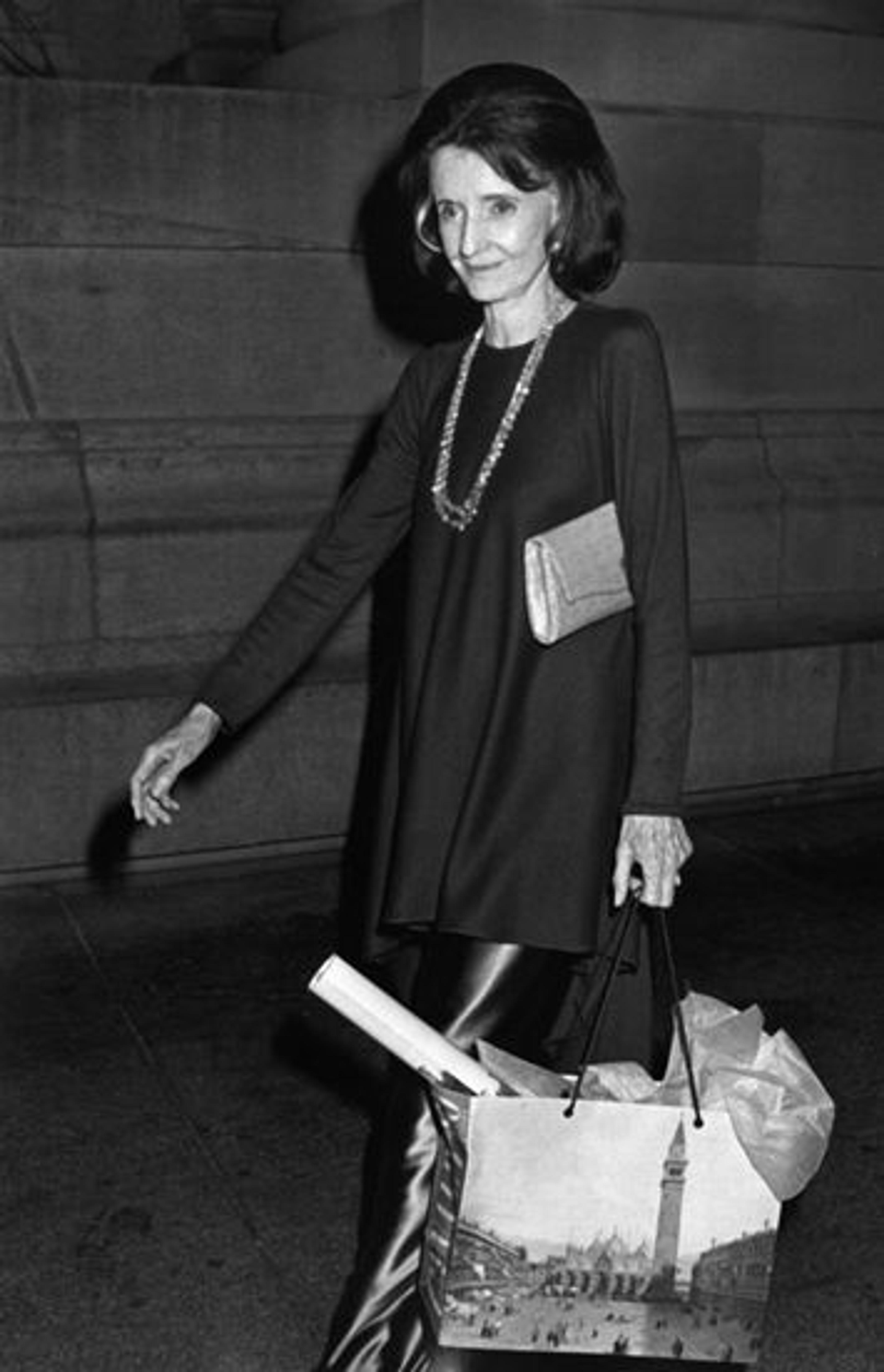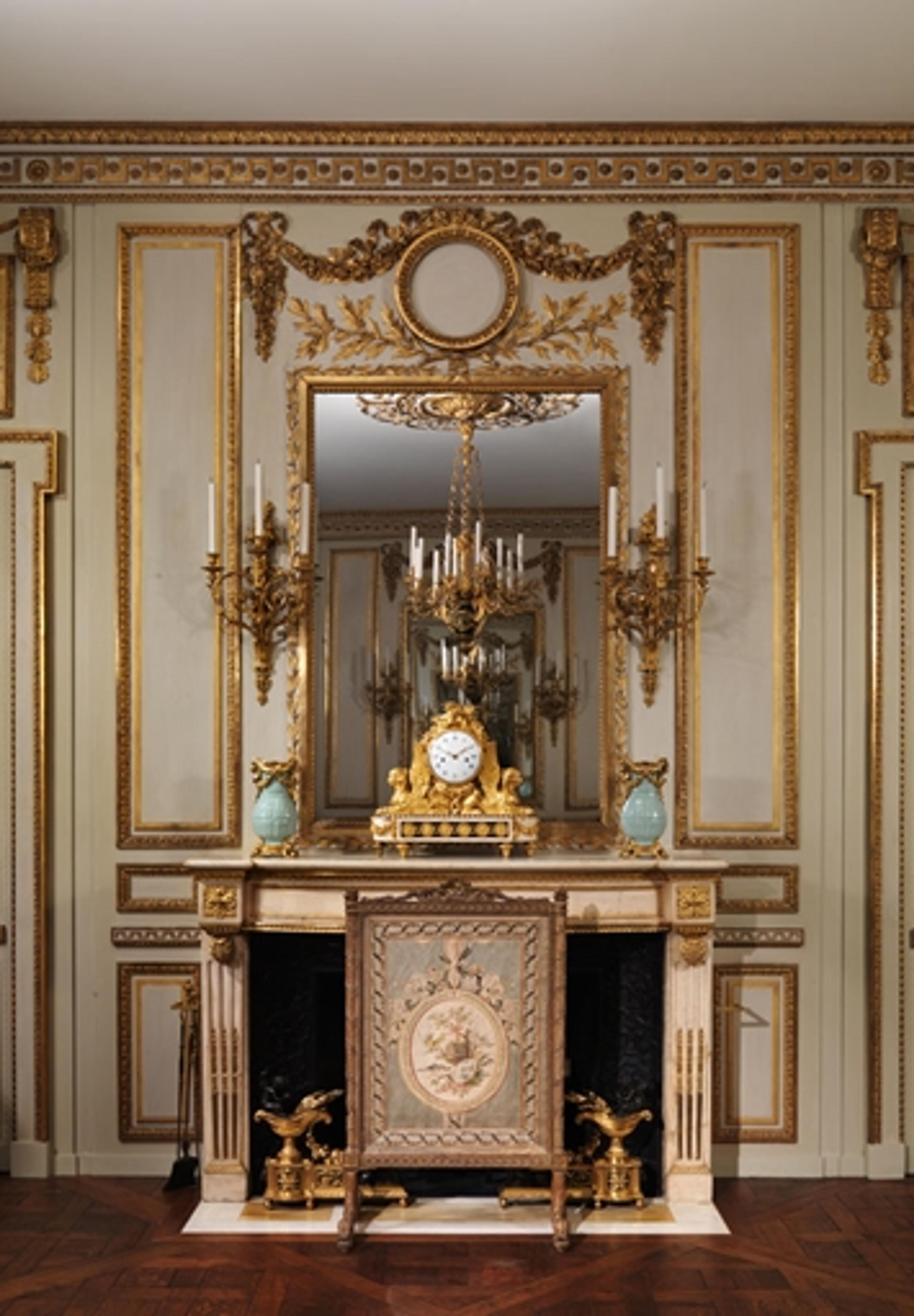«It is with sadness that the Museum announces the death of the legendary Jayne Wrightsman, who, with her late husband, Charles, was among The Met's most important benefactors. Their generosity is honored in Charles and Jayne Wrightsman and The Metropolitan Museum of Art, a new online feature with essays that pay tribute to the ways in which the couple helped shape The Met collection through their financial support and extraordinary gifts of works of art. One such gift, the elegant gold-and-white Neoclassical room from the Hôtel de Cabris, is among the most beautiful and evocative spaces in the Museum. »

Right: Jayne Wrightsman attends the Canaletto exhibition opening on October 30, 1989, at The Metropolitan Museum of Art. Photo by Ron Galella, Ltd./WireImage

An Italian architect designed the building, and a French sculptor supervised the interior decoration of the Hôtel de Cabris, located in the town of Grasse in southern France. The owner of the new townhouse was Jean-Paul de Clapiers, third marquis de Cabris (1749–1813). The young, recently married aristocrat never actually lived there, however. Before the house was finished, he was declared legally insane and incarcerated, while his wife took refuge in a convent. A 1778 inventory indicates that the inside of the Hôtel de Cabris was in disarray and that this boiserie, or woodwork, was still in the packing crates. A decade later, the marquise occupied the house briefly, before emigrating to escape the travails of the French Revolution. The paneling may have been installed for her.
Left: Boiserie from the Hôtel de Cabris, Grasse, ca. 1774, with later additions. French, Paris. Carved, painted, and gilded oak, H. 11 ft. 8-1/2 in. x W. 22 ft. 10-1/2 in. x L. 25 ft. 6 in. (3.56 x 6.96 x 7.77 m). The Metropolitan Museum of Art, New York, Purchase, Mr. and Mrs. Charles Wrightsman Gift, 1972 (1972.276.1)
Sold in 1910 to an English dealer, the paneling was subsequently auctioned in Paris, at the Hôtel Drouot, in 1937. Later, it came into the hands of Duveen Brothers, a famous art-dealing firm. Charles and Jayne Wrightsman bought the components of the Cabris salon from Duveen in 1957, and the panels were set up in the dining room of their Fifth Avenue apartment. In 1972, Mr. and Mrs. Wrightsman gave the Cabris boiserie to The Met as the essential component of a new period room that opened to the public in 1977.
The original salle de compagnie, or reception room, was significantly smaller than either the Wrightsman dining room or the gallery as now installed. Originally, there were five pairs of double doors and five mirrors; today, four double doors are in use, while only three mirrors remain. Each door panel's delicately attenuated decoration features a smoking incense burner above, and a flaming torch below, with crossed branches of laurel behind. The gilding of the burners is brightly polished and reflective, while the smoke and leaves are matte. The four corner panels curve inward, and each shows a boss and a bowknot at the top, with ribbons from which different musical trophies and laurel branches are suspended.
The installation of a period room is an infrastructure project, complex and time-consuming. In expanding and making changes to the space, Mr. and Mrs. Wrightsman were advised by curator James Parker, an expert in French furniture and decorative arts, and Sir John Pope-Hennessy, then-chairman of the Department of European Paintings. I was in my twenties and, as the youngest curatorial staff member, was delegated the least significant tasks.
When the installation was complete, there was a magnificent private dinner in the central gallery, every detail of which was overseen by Jayne. I was astonished to be seated at her table between John Russell, art critic of the New York Times, and Denys Sutton, editor of Apollo magazine. It was, I believe, her intention that I should entertain Mr. Sutton, who had had a voice-box operation and was unable to speak. He wrote to me on innumerable white paper cocktail napkins.
Among the pleasures of the evening was the Bordeaux from the Dillon family's Haut-Brion vineyard that was provided by Douglas Dillon—a banker, former ambassador to France and the president of the Museum's Board of Trustees at the time. Jayne's courtesy was absolutely unmatched; and her legacy, support, and vigilance will remain in the memory of many members of the Museum's staff.
Related Feature
Explore Charles and Jayne Wrightsman and The Metropolitan Museum of Art: a new online feature that includes essays, photos, and a list of publications related to the Wrightsmans and their transformative gifts of art to the Museum.
